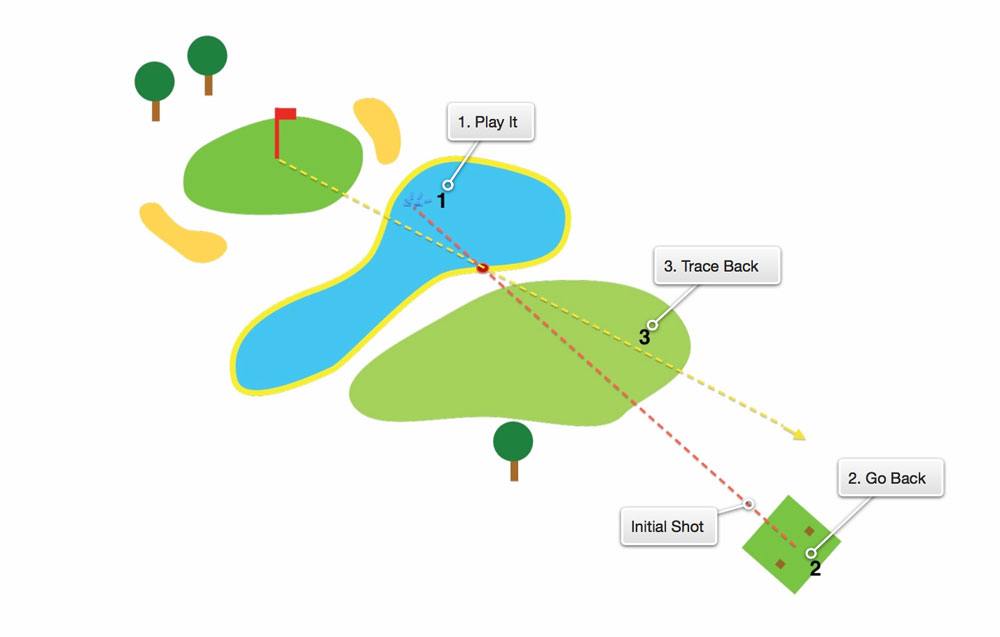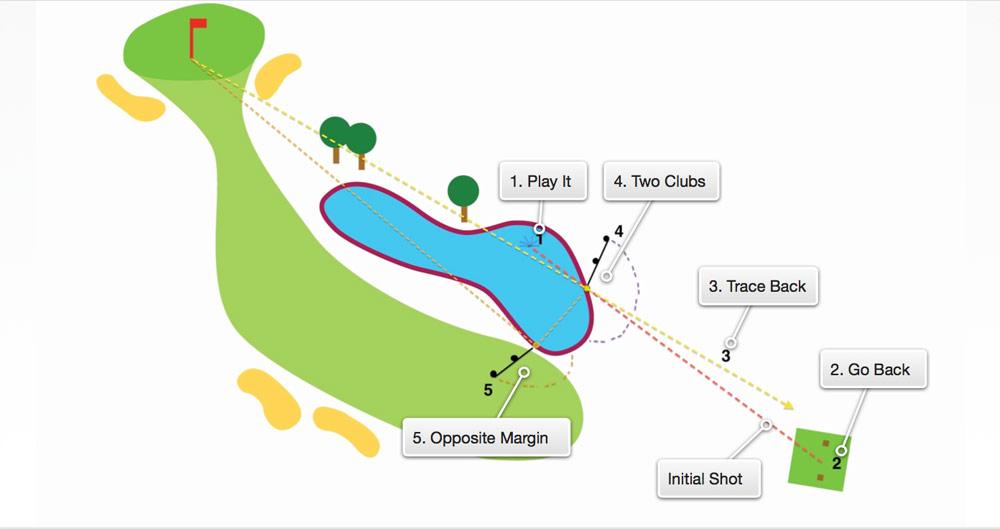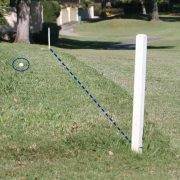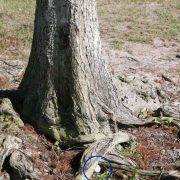Rules of Golf – Water Hazards
When you hit your ball into a water hazard, the first thing to do is to notice whether the hazard is marked with the red stakes for lines, or with yellow stakes or lines. A water hazard marked with yellow is a standard water hazard, while red markings indicate a lateral water hazard, and comes with additional options for you.
Yellow Stakes/Lines: Water Hazard
 In either case, if you find your ball, you always have the option to play the ball as it lies from within the hazard at no penalty. Bear in mind that from within the hazard, you are not permitted to rest your club on the ground when addressing the ball.
In either case, if you find your ball, you always have the option to play the ball as it lies from within the hazard at no penalty. Bear in mind that from within the hazard, you are not permitted to rest your club on the ground when addressing the ball.
Assuming you can’t play the ball from where you found it, each option from a water hazard comes with a one stroke penalty. In both red and yellow hazards, you also have the option to go back to the point where you played your last shot, and play from there.
If neither of these two options are desirable, you’ll need to note the point where your ball last crossed into the margin of the hazard. The line of the hazard extends vertically upward, so if your ball was in the air, try to figure out this point as best you can. In both varieties of hazards, you have the option to take the flagstick, and the point where your ball last cross into the hazard, and move back on a straight line away from the hole as far as you like. You can choose to drop your ball at any point on this line, of course incurring a one stroke penalty. In a yellow hazard, these are your only three options.
Red Stakes/Lines: Lateral Water Hazard
 In a red, or lateral hazard, you have 2 additional options available to you. The first, and perhaps the most common, is to take the point where your ball last crossed into the hazard, and drop within two club lengths of this point, no closer to the hole. The fifth and final option in a red hazard, is to take a point, equidistant from the point where your ball last crossed into the hazard, but on the opposite side of the hazard, and drop within two club lengths from there. This option is rarely used, but it’s always beneficial for a player to know the rules.
In a red, or lateral hazard, you have 2 additional options available to you. The first, and perhaps the most common, is to take the point where your ball last crossed into the hazard, and drop within two club lengths of this point, no closer to the hole. The fifth and final option in a red hazard, is to take a point, equidistant from the point where your ball last crossed into the hazard, but on the opposite side of the hazard, and drop within two club lengths from there. This option is rarely used, but it’s always beneficial for a player to know the rules.
In summary, a water hazard marked with yellow is a standard water hazard. Water marked with red is called a lateral water hazard, and normally runs along the side of a golf hole. The three options you have in both cases are that you can play the ball from where it lies, go back to where you hit your last shot, or take a drop anywhere along a straight line from the flagstick and the point where the ball last crossed into the hazard. With red stakes or lines, you have an option of dropping within two club lengths the point of last crossing, or moving to the opposite side of the hazard equidistant from the hole, and dropping within 2 club lengths from there.








